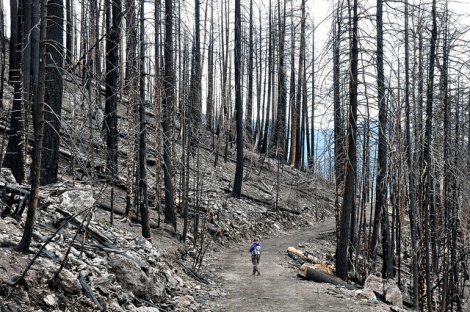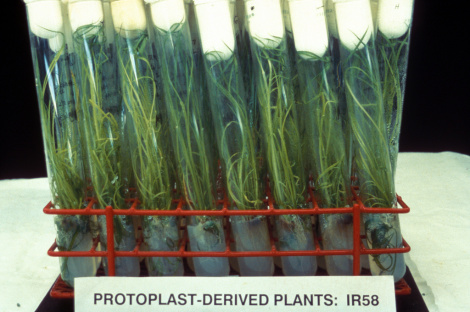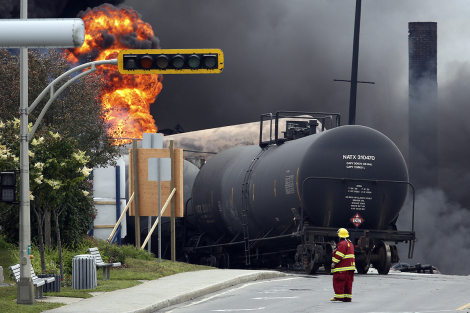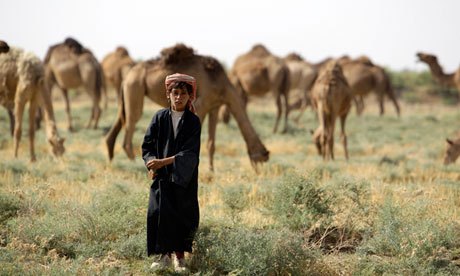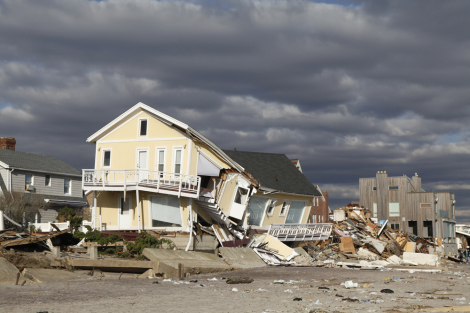Mary Annette Pember, Indian Country Today Media Network
A brand new tribe is emerging in Northern Wisconsin. Enrollment requirements for the Penokee tribe are stringent, according to Paul DeMain, co-founder of the Penokee Hills Harvest Camp—they require all members prove they are at least 70 percent water.
Water, the element that unifies all human life, is the binding force behind a surprising coalition of people and organizations near the Great Northern Divide in the Penokee Hills. Although many of these people have had opposing philosophies regarding economic development, they are united in their desire to ensure clean water. Public concern over the impact on the water and environment of a proposed 4.5 mile wide open-pit iron ore mine is creating a whole new tribe and new way to protest. The fictitious, allegorical Penokee Tribe effectively includes all human beings since everyone needs water to survive. The Harvest Camp and inclusive nature of other groups protesting the mine underscores this binding fact. More than a simple protest by occupation, the residents and supporters of the camp demonstrate and include visitors in traditional plant gathering and preparation. The goal is to instill awareness of the natural resources of the area and how they would be affected by the mine.
Despite opposition from citizens, tribes and environmentalists, Wisconsin’s Republican-led legislature passed a mining bill in March that substantially changed the state’s mining regulations. The bill, which was created with major input from Gogebic Taconite lobbyists, streamlines the mining permit process and weakens environmental protections as well as the responsibilities of mining companies to surrounding communities for damages to infrastructures or property. Gobegic Taconite (GTAC) is doing exploratory drilling in the Penokee Hills in order to get samples of iron ore to submit to the Wisconsin Department of Natural Resources to gain permission to proceed with the mining process. If approved, GTAC can then proceed with “mini-mining,” a greater sampling process of about 10,000 tons of rock that would be extracted with explosives.
Recently, groups opposing the mine have taken a novel approach to building support and awareness of this issue. Instead of picketing, they began by educating county board members and talking neighbor-to-neighbor about the real human and community costs of such a mine.
Mining has been pitched in the state as job-creator for the economically strapped northern region of the state, notes citizen journalist Barbara With, a resident of Madeline Island. She and several tribal and citizen groups have worked together to steer the public discussion in another direction. “Instead of jobs, jobs, jobs, we’ve gotten people to begin talking about water, water, water,” she explains.
In June 2013, the Ashland County board, closest local governing authority to the proposed mine, voted to create county mining regulations that require mining companies to obtain special use permits and deposit copy00,000 in a county fund to address problems such as noise, dust, damage to public roads, etc. Further, the county requires mining companies to maintain the fund at $50,000, and make additional payments as needed. Formerly, Ashland County had been an ardent support of the mine.
According to With, the change in attitude by board members was the direct result of grassroots education efforts about the real economic, quality of life and environmental impact of the mine. She credits the more inclusive, educational efforts by tribes and advocates in the area with this change. For instance she noted that last year the Bad River Band of Ojibwe began inviting non-reservation residents to their monthly potlucks that are organized to educate and share information about the potential impact of the mine. The Harvest Camp is also welcoming to the public. More than an occupation alone, the Camp residents and supporters work to inform visitors about the potential impact of mining on the natural habitat. They do this by actively including visitors in traditional harvesting and cooking methods.
With did a risk management presentation to the Ashland County board that included factual information about how businesses need to create risk management plans in order to protect themselves. “I personally went from a combative relationship with the board to one of support and looking at ways I could support and educate them,” she says.
In February, the Lac Courte Oreilles (LCO) Band of Wisconsin Ojibwe helped created a unique way to draw public attention to the role the Penokee Hills plays in the health of the region by building a Harvest Camp not far from the proposed mining site. An 1842 treaty guarantees hunting, fishing and harvesting rights on ceded territory in the northern third of the state where the Penokee Hills are located. The site of the Harvest Camp is especially important for Wisconsin’s six Ojibwe bands since the area formerly contained almost 200 Indian allotments in the late 1800s that were stolen from Indians in favor of wealthy investors of the original shaft mining in the area. The camp will be open for hunting, fishing, harvesting (wild rice and maple syrup) and public recreational use as defined by treaty and public laws. The public is invited to pitch tents at the camp, join guided tours to the GTAC sample drilling site and participate in the traditional learn.
Residents of the camp are conducting demonstrations to youth and visitors about sustainable harvesting of plants, animals and medicines and in the process drawing attention to the role that clean water plays in a healthy environment. LCO elder Marvin Gasper told Wisconsin Public Radio WPR, “This is a brand-new way [to protest]. It’s a peaceful manner in which we are using a harvest area and showing what can be taken out of this and be saved.”
According to Demain, the camp is immensely popular, drawing visits from racially and socially diverse people. “Grandmothers, kids, county supervisors, journalists are visiting the camp to learn what is going on here,” he says.
Camp leaders also guide visitors to view GTAC’s exploratory drilling sites.
In describing the tribe’s motivation for supporting the Harvest Camp, its website says, “Any activity, mining or otherwise, that threatens water must be the subject of careful and thorough scrutiny so a healthy decision can be made.”
“The water is sacred to our people and vitally important to the survival of all the people in Northern Wisconsin,” says Gordon Thayer, Lac Courte O’reilles (LCO) tribal chair.
Iron County, partially affected by the mine, is also considering passing mining regulations similar to those of Ashland County. A rally is planned for July 1 in Hurley, Wisconsin to draw attention to a public information meeting held by the Zoning Commission about the proposed regulations. The Zoning Commission will pass their recommendations on to the Iron County board that plan to vote on passage of the regulations as soon as this week.
In the past, many Iron County residents and leaders were staunch supporters of mining, especially for its potential of bringing in new jobs. George Myer, former Wisconsin Department of Natural Resources secretary and current executive director of the Wisconsin Wildlife Federation, recently spoke to citizens in Iron County about the need for county level mining regulations.
He explained that the mine would represent a permanent land use change to the county and that local governments need ordinances to protect the property rights of its citizens and to protect taxpayers from shouldering the short- and long-term costs of a mine not covered by state law.
The public discussion about mining is definitely changing in Northern Wisconsin. On June 21, the Ashland Daily Press reported that Ashland County board chairman Pete Russo who represents the city of Mellen (the closest town to the mining site) said, “There are a lot of people with concerns on impacts [of the mine] on property values. They want guarantees on the water. We need that copy00,000 [from GTAC]. Nobody else will take care of us.”
Such sentiments represent a huge turnaround from 2011, when the board voted unanimously in support of the mine.
GTAC spokesman Bob Seitz told the Milwaukee Journal-Sentinel that such county ordinances were unnecessary and may be impossible to meet since state regulations were already in place. In describing Ashland County’s recently passed mining regulations he said, “What they passed is an open checkbook. There is no limit to what the company would have to pay.”
Frank Kuehn, president of the Penokee Hills Education Project, and others opposed to the mine are skeptical about GTAC’s hints at discontinuing their plans. “I’m not convinced of anything that comes out of GTAC’s mouth. They’ve threatened to leave in the past. At one point they closed their offices but never really left. They may be trying to wait us out.”
In a June 22, 2013 interview with the Cap Times of Madison, With said, “Everybody who thinks this mine is good has been completely hoodwinked, and people in Iron County are waking up to it,” With says. “The tide has really turned up here.”
Read more at http://indiancountrytodaymedianetwork.com/2013/07/07/fighting-mines-wisconsin-radical-new-way-be-radical-150308


